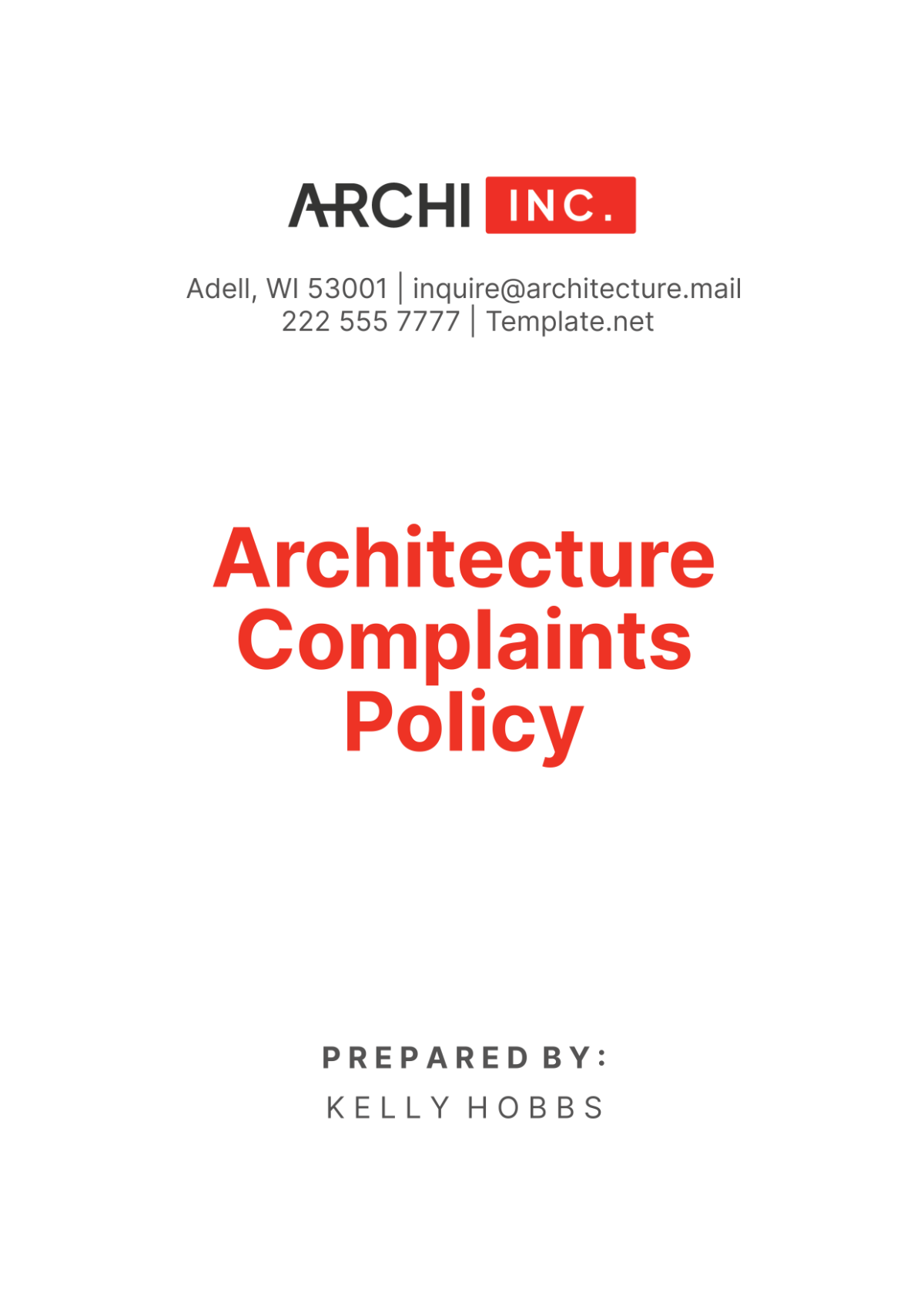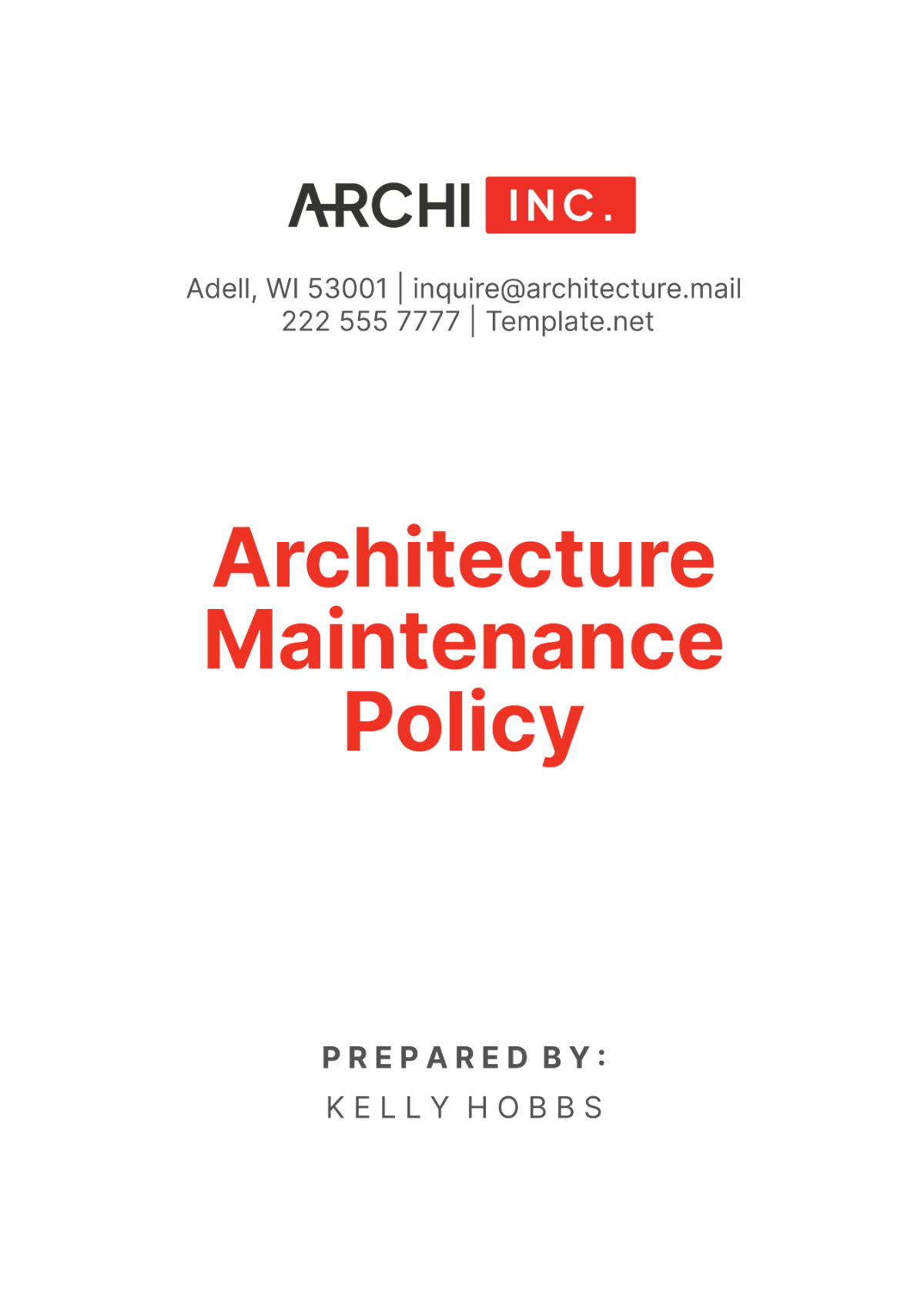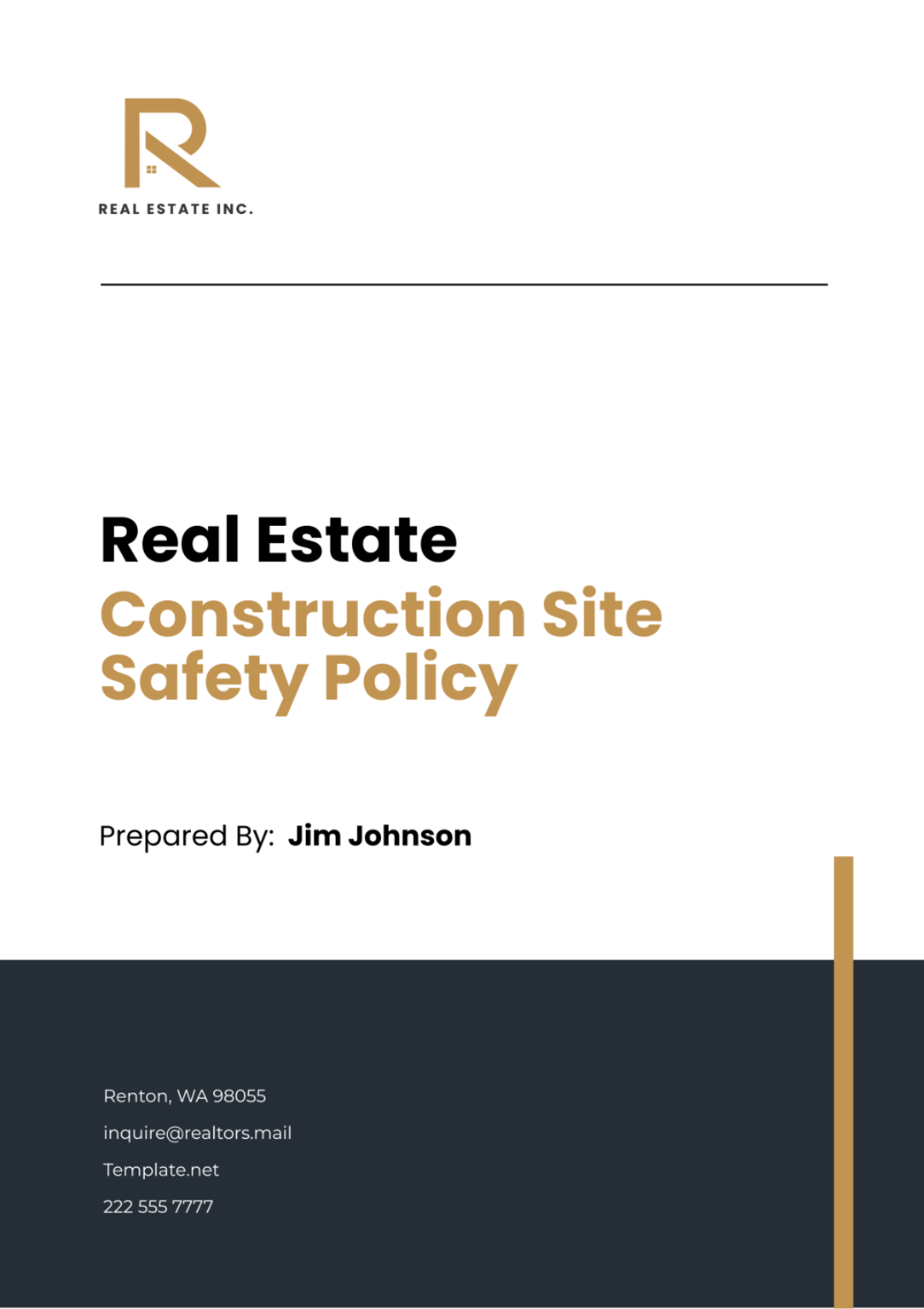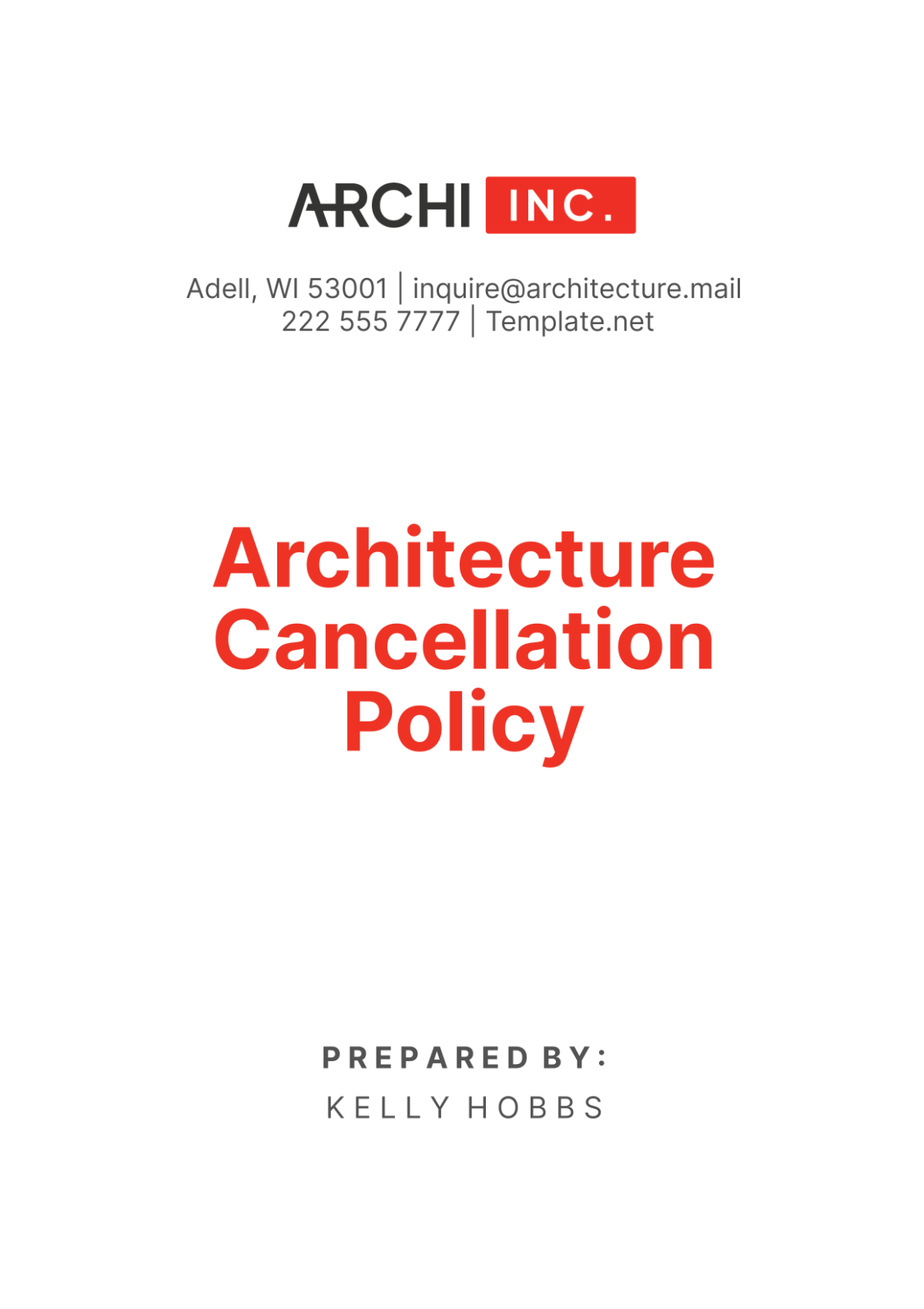Architecture Maintenance Policy
I. Introduction
A. Purpose
The purpose of the Maintenance Policy of [Your Company Name] is threefold:
Preservation: To ensure that all architectural structures designed and constructed by [Your Company Name] are properly maintained. This helps to preserve their integrity, functionality, and aesthetics.
Longevity: To prolong the lifespan of our projects. Regular maintenance helps to prevent premature wear and tear, extending the useful life of the structures.
Safety: To ensure the safety of all our projects. Regular maintenance and emergency repairs help to identify and rectify potential safety hazards, ensuring the well-being of the occupants.
B. Scope
The scope of this policy is comprehensive, covering all architectural projects completed by [Your Company Name]. This includes residential, commercial, and public buildings. It encompasses all aspects of building maintenance, including structural, mechanical, electrical, and aesthetic elements.
II. Maintenance Schedule
The maintenance schedule outlines the frequency and nature of maintenance tasks, ensuring that all architectural structures designed and constructed by [Your Company Name] are properly maintained.
A. Regular Inspections
Regular inspections are essential for identifying potential issues before they become major problems. The inspection schedule for [Your Company Name] is as follows:
Quarterly Inspections: These inspections are conducted every three months. They provide a regular opportunity to assess the overall condition of the buildings and identify any areas that may require attention. Each inspection is followed by a detailed report that outlines the findings and recommends any necessary remedial actions.
Annual Comprehensive Inspection: This is a thorough inspection conducted once a year. It covers all structural, mechanical, and electrical systems, ensuring that all aspects of the building are functioning as intended. The results of this inspection form the basis for the annual maintenance plan.
Special Inspections: Special inspections are scheduled as needed based on specific building requirements or after significant weather events. These inspections allow [Your Company Name] to respond quickly to any unexpected issues or changes in the condition of the buildings.
B. Preventive Maintenance
Preventive maintenance is a proactive approach to building maintenance. It involves regularly scheduled tasks that help prevent premature wear and tear and prolong the life of building components. The preventive maintenance schedule includes:
Bi-Annual Maintenance: All mechanical systems undergo preventive maintenance twice a year. This includes tasks such as lubrication, calibration, and performance checks, which help to ensure the smooth operation of these systems and prevent unexpected breakdowns.
Annual Electrical Inspection: All electrical systems are inspected annually. This inspection ensures that all wiring, circuits, and outlets are in safe working condition and meet the required safety standards.
Bi-Annual Exterior Maintenance: The exterior surfaces of the buildings, including walls, roofs, and windows, are maintained twice a year. This maintenance helps to prevent deterioration due to weather exposure and ensures that the buildings continue to look their best.
III. Emergency Repairs
Emergency repairs are crucial for addressing unexpected issues that pose immediate threats to the safety or functionality of the building.
A. Reporting Emergencies
In the event of an emergency, it is crucial to report it immediately for prompt action. The reporting protocol includes:
Staff Reporting: All staff members must report any observed damage or malfunction immediately to the maintenance team. This can be done through a dedicated phone line or an online reporting system. Prompt reporting allows for quick action, minimizing potential damage and disruption.
24/7 Emergency Contact: A 24/7 emergency contact number will be provided to all building occupants for immediate reporting of critical issues. This ensures that even outside of regular working hours, emergencies can be promptly addressed.
Emergency Reporting System: [Your Company Name] will implement an easy-to-use emergency reporting system. This system will allow for efficient communication between the reporting party and the maintenance team, ensuring a swift response.
B. Emergency Response Protocol
Having a well-defined emergency response protocol ensures quick and efficient handling of issues. The protocol includes:
Immediate Assessment: Once an emergency is reported, the maintenance team will assess the situation within 1 hour. They will prioritize immediate threats to safety or structural integrity. This rapid assessment allows for immediate action to mitigate any risks.
Temporary Measures: Temporary measures will be taken immediately to mitigate any danger, followed by a detailed plan for permanent repairs within 24 hours. These measures could include cordoning off dangerous areas or implementing temporary structural supports.
Permanent Repairs: After temporary measures have been implemented, a plan will be developed for permanent repairs. These repairs will be carried out as quickly and efficiently as possible to minimize disruption.
C. Emergency Repair Teams
To ensure a swift response to emergencies, [Your Company Name] will establish dedicated emergency repair teams. These teams will be specially trained to handle a variety of emergency situations.
Training: All members of the emergency repair teams will undergo rigorous training. This training will equip them with the skills and knowledge necessary to handle a wide range of emergency repair situations.
Availability: Emergency repair teams will be available 24/7. This ensures that no matter when an emergency occurs, a team will be ready to respond.
Equipment: Emergency repair teams will be equipped with all the necessary tools and equipment to carry out repairs. This ensures they can respond effectively to a wide range of emergency situations.
IV. Documentation and Record-Keeping
Proper documentation and record-keeping are essential for effective building maintenance. They provide a historical record of maintenance activities, which can be useful for planning future maintenance tasks, identifying recurring issues, and ensuring accountability.
A. Maintenance Logs
Maintenance logs provide a detailed record of all maintenance activities performed on the building. They are an essential tool for tracking performed actions and planning future maintenance tasks.
Recording Maintenance Activities: All maintenance activities will be documented in a centralized system accessible to authorized personnel only. This ensures that a complete record of all maintenance work is maintained.
Detailed Log Entries: Each log entry will include the date, nature of the work, parts used, and the personnel involved in the maintenance task. This level of detail allows for effective tracking and accountability.
Reviewing Logs: The maintenance team will review logs quarterly to identify recurring issues and plan necessary interventions. This proactive approach can help prevent minor issues from becoming major problems.
B. Inspection Reports
Inspection reports provide a detailed account of the findings from each inspection. They are crucial for ensuring all elements of the building remain in optimal condition.
Generating Reports: Following each inspection, a detailed report will be generated and stored in the central maintenance system. This ensures that the findings from each inspection are recorded and can be easily accessed when needed.
Report Contents: The reports will include findings, recommendations, and follow-up actions required to address any identified issues. This provides a clear plan of action following each inspection.
Accessing Reports: Inspection reports will be accessible to all relevant personnel, including the maintenance team, building managers, and safety officers. This ensures that everyone involved in the building’s maintenance has access to the information they need.
C. Maintenance Records
Maintenance records provide a historical record of all maintenance activities. They are essential for planning future maintenance, identifying trends, and ensuring accountability.
Record Keeping: All maintenance activities, from routine tasks to major repairs, will be recorded. These records will include details of the work performed, the date, and the personnel involved.
Access to Records: Maintenance records will be stored in a centralized system and will be accessible to authorized personnel. This ensures that all relevant parties have access to the information they need.
Use of Records: Maintenance records will be used for planning future maintenance activities, identifying trends or recurring issues, and ensuring accountability. They provide a valuable resource for improving the effectiveness of the maintenance program.
V. Training
Training ensures that all personnel involved in building maintenance are equipped with the necessary skills and knowledge to perform their duties effectively. The following table provides a summary of the key maintenance training programs offered by [Your Company Name]:
Training Program | Frequency |
|---|---|
Basic Maintenance Training | Annually |
Advanced Technical Training | Bi-Annually |
Emergency Response Training | Annually |
Continuous Professional Development | Quarterly |
A. Basic Maintenance Training
Basic Maintenance Training is provided annually to all maintenance personnel. This training covers the basics of building maintenance, including safety procedures, use of equipment, and general maintenance tasks. It ensures that all personnel have a solid foundation of knowledge to perform their duties effectively.
B. Advanced Technical Training
Advanced Technical Training is provided bi-annually and offers in-depth knowledge of specific technical aspects of building maintenance. This includes specialized training on HVAC systems, electrical systems, plumbing, and other technical areas. This training ensures that our maintenance personnel are equipped to handle a wide range of technical maintenance tasks.
C. Emergency Response Training
Emergency Response Training is provided annually to equip staff with the skills needed to respond effectively to building emergencies. This includes training on emergency protocols, use of emergency equipment, and first aid procedures. This training is crucial for ensuring the safety of building occupants in the event of an emergency.
D. Continuous Professional Development
Continuous Professional Development is provided quarterly to keep staff updated on the latest trends and technologies in building maintenance. This includes training on new maintenance techniques, equipment, and software. This ongoing training ensures that our maintenance personnel are always at the forefront of industry developments.
The combination of basic training, advanced technical training, emergency response training, and continuous professional development ensures that our personnel are well-equipped to handle all aspects of building maintenance. They not only equip our personnel with the necessary skills and knowledge but also contribute to the overall quality and effectiveness of our maintenance services. By investing in the training and development of our personnel, [Your Company Name] is able to provide superior maintenance services that ensure the longevity and integrity of our architectural structures.
VI. Review and Revision of the Policy
The review and revision of the policy is a crucial process that ensures the policy remains current, effective, and aligned with the latest industry standards and regulations.
A. Biennial Review
The policy will be reviewed every two years to ensure it remains current and effective. The review process includes:
Assessment of Policy Effectiveness: The effectiveness of the policy will be assessed based on feedback from maintenance personnel, building occupants, and other stakeholders. This assessment will identify any areas of the policy that may need improvement.
Comparison with Industry Standards: The policy will be compared with the latest industry standards and best practices for building maintenance. This ensures that [Your Company Name]'s policy remains at the forefront of the industry.
Consideration of Technological Advances: The review will also consider any advances in technology that could improve building maintenance processes. This could include new maintenance equipment, software, or techniques.
B. Policy Revisions
Based on the findings of the biennial review, the policy may be revised. The revision process includes:
Updating Procedures: Any procedures outlined in the policy that are found to be outdated or ineffective will be updated. This ensures that the policy reflects the most effective and efficient methods for building maintenance.
Incorporating New Standards: If the review identifies any new industry standards or regulations that are not currently included in the policy, these will be incorporated into the revised policy.
Implementing Technological Advances: If any technological advances are identified during the review that could improve building maintenance processes, these will be implemented in the revised policy.
C. Policy Approval and Implementation
Once the policy has been revised, it will be approved by the relevant authorities within [Your Company Name] and implemented across all projects.
Approval Process: The revised policy will be presented to the relevant authorities within [Your Company Name] for approval. This ensures that all revisions are in line with [Your Company Name]'s overall objectives and standards.
Implementation Process: Once approved, the revised policy will be implemented across all projects. This will involve training maintenance personnel on any new procedures or technologies included in the revised policy.
Monitoring and Feedback: After implementation, the revised policy will be monitored to assess its effectiveness. Feedback will be collected from maintenance personnel and other stakeholders to identify any issues or areas for further improvement.




